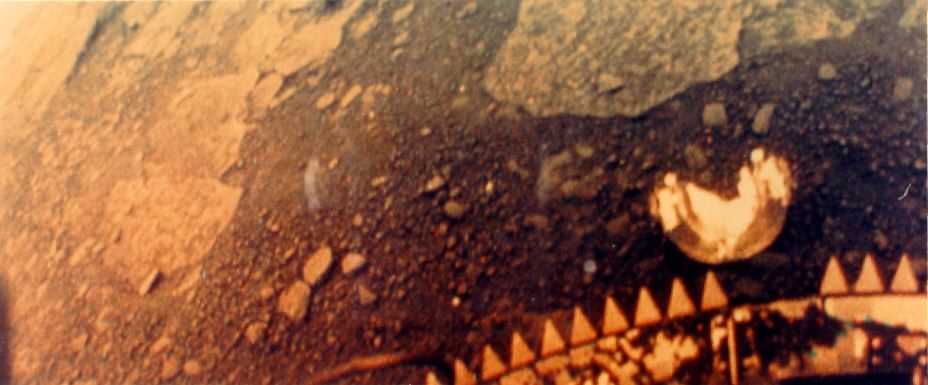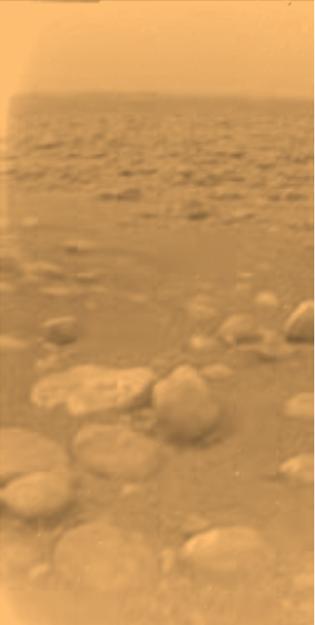Three Planetary/Moon Surfaces Compared
 MARS -->
MARS -->
The highest resolution images are from Mars, showing moderate size rocks, interspersed with loose sand/dirt. The reddish color is due to the highly oxidizing surface, which has rusted all the sand and rocks. The atmosphere is a bit orange in color, as seen from the surface, only because it is dry and full of Mars dust. However, optical (and even more harsh UV) light is able to penetrate to the
surface, meaning you can find the sun in the sky, etc.
 <--VENUS
<--VENUS
This image was taken from the surface of Venus with the
Russian Venera 13 lander. The lander survived at the surface
for just 90 minutes before being melted and crushed by the extreme
heat and pressure. The atmosphere is not opaque to optical
light, so one would NOT see the sun in the sky. Only a very dense
haze would be seen when looking up. The orange is an effect of
the oxidization and the scant red-orange light that is able to
penetrate the upper cloud decks. Again we see small boulders
or rocks, interspersed with a loose aggregate.
 TITAN -->
TITAN -->
Our most recent acquisition is the surface images taken from the
Huygen's lander on Titan, in January 2005. It looks very similar to
the images we have above of Mars and Venus. Like Venus, Titan has
a dense enough atmosphere that one would not be able to easily see
the Sun. Its not quite as hazey as Venus. The general glow of the
Sun (quite dim, of course, from this distance!) might be discernable
in the sky. Again, the same mix of rocks and loose aggregate
is seen, only there is one very big difference. Titan has a very
low overall density, indicating it had a large fraction of water ices.
It is expected that the 'dirt' one sees is indeed some kind of dirty
sediment of crushed up ices with organic debris. But the larger,
whitish 'rocks' are in fact rocks of solid water ice.